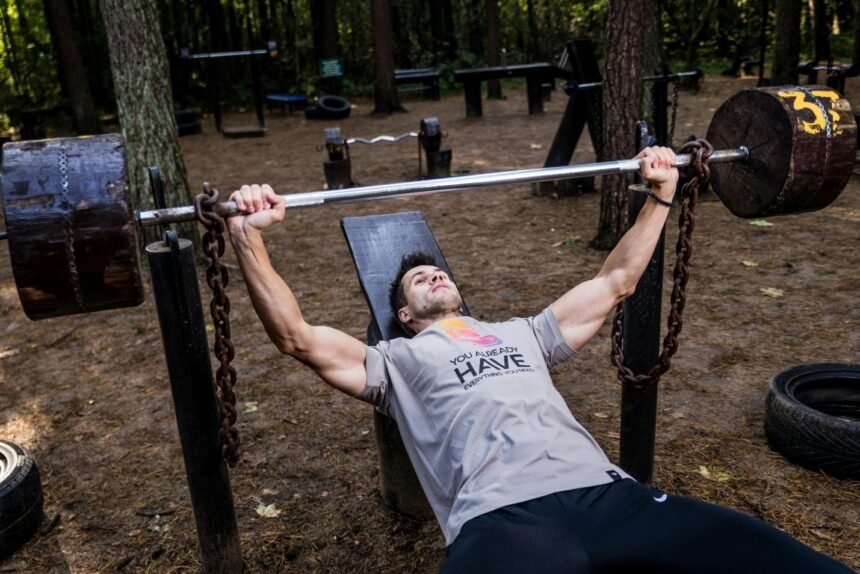Health inequality remains a serious challenge for many communities across the UK. While some people have easy access to gyms, fitness classes, and personal trainers, others face barriers such as high costs, lack of transport, or limited facilities in their area. These inequalities can have long-term effects on physical and mental health, contributing to rising rates of obesity, cardiovascular disease, and poor well-being.
One solution gaining attention is the introduction of outdoor gyms in parks, schools, and community spaces. Outdoor fitness equipment offers free, accessible fitness opportunities to everyone, regardless of age, income, or background. They have the potential to make a real difference in reducing health disparities by creating welcoming, inclusive environments where exercise becomes a natural part of daily life.
The Link Between Access and Health Inequality
Communities with fewer resources often lack safe, accessible spaces for exercise. This gap means individuals are less likely to meet recommended physical activity levels, leading to health problems that can persist into adulthood. Research shows that lower-income areas tend to have fewer gyms, sports facilities, and green spaces, which deepens the cycle of poor health outcomes.
Outdoor gyms can help close this gap by removing cost and accessibility barriers. They are open 24/7, require no membership fees, and encourage residents to enjoy exercise in familiar, local settings. By putting fitness equipment in parks, housing estates, and public spaces, councils and community groups can make exercise more accessible than ever.
Encouraging Fitness for All Ages and Abilities
Outdoor gyms are not just for athletes or gym enthusiasts. The equipment is designed for all fitness levels, allowing users to work at their own pace. Low-impact cardio machines, resistance stations, and strength equipment cater to a range of abilities, making outdoor gyms suitable for children, adults, and older people.
Many outdoor gyms also include instructional signage or QR codes that link to exercise tutorials, helping users feel confident even if they’ve never used fitness equipment before. This self-guided style of training makes outdoor gyms less intimidating than traditional gyms, encouraging more people to get involved.
Mental Health Benefits and Social Connection
Exercise has proven benefits for mental health, reducing stress, anxiety, and depression while improving overall mood. Outdoor gyms provide an added boost by encouraging exercise in natural settings, which studies show can improve focus and emotional well-being. According to Mind, regular physical activity can be as effective as medication or therapy for some people experiencing mild depression.
They also create a sense of community. People who may not have access to commercial gyms can meet neighbours, form friendships, and build confidence through outdoor exercise. These social interactions strengthen communities and help reduce the isolation that often comes with health inequalities.
Removing Financial Barriers to Fitness
One of the main advantages of outdoor gyms is that they are completely free to use. For people on low incomes or those unable to commit to a gym membership, this can be life-changing. Outdoor fitness areas remove the financial pressure associated with staying healthy, making regular exercise possible for everyone.
For councils and organisations, outdoor gyms are also cost-effective. Once installed, they require minimal ongoing expenses, especially compared to the high cost of maintaining indoor facilities. This makes them a sustainable investment in public health.
Outdoor Gyms as a Public Health Strategy
Local authorities and health organisations are recognising the value of outdoor gyms in improving health outcomes. Outdoor gyms also support wider government goals to get more people active and reduce obesity rates. Public Health England’s Everybody Active, Every Day framework highlights the importance of making activity part of everyday life, and outdoor gyms are an effective way to achieve this.
Campaigns that combine outdoor gym installations with community fitness classes, walking groups, and health education programmes have proven especially effective. These initiatives encourage participation and create long-term behavioural changes that can help reduce pressure on healthcare services.
Inclusivity and Accessibility
Modern outdoor gym equipment is designed with inclusivity in mind. Many pieces are suitable for wheelchair users or people with limited mobility, ensuring that everyone has an opportunity to benefit from regular physical activity.
Providing inclusive spaces sends an important message about equality and representation. When people see equipment designed for all abilities, it encourages greater participation and reduces the stigma that often prevents people from engaging with fitness.
Encouraging Young People to Be Active
Outdoor gyms can also play a role in preventing health issues later in life by encouraging children and teenagers to be active. With many young people spending more time on screens, providing engaging outdoor spaces helps build lifelong healthy habits.
Schools and local councils can create outdoor fitness zones that encourage families to exercise together, making health and fitness part of everyday life rather than a separate activity.
Environmental and Community Benefits
Installing outdoor gyms can also improve local environments. Well-designed spaces encourage residents to use parks more often, creating safer, more vibrant neighbourhoods. When people feel invested in their surroundings, there is often less vandalism and a stronger sense of community pride.
Outdoor gyms also promote eco-friendly exercise. Unlike traditional gyms, which require energy for lighting, heating, and equipment, outdoor fitness areas run entirely on human power, helping reduce environmental impact.
Building Confidence and Independence
Another advantage of outdoor gyms is that they give people the chance to exercise independently. For those new to fitness, this can be a huge step towards building confidence. With clear signage, durable equipment, and an open, welcoming environment, outdoor gyms empower users to take charge of their health without needing to book classes or follow rigid schedules.
This independence is particularly important in areas where access to structured fitness support is limited. Outdoor gyms offer a space where individuals can take control of their own health journey.
Final Thoughts
Outdoor gyms are more than just a trend; they are a practical, affordable solution to tackling health inequality in local communities. By removing barriers like cost, travel, and accessibility, they make fitness inclusive and enjoyable for people of all ages and backgrounds. Beyond improving physical health, these spaces encourage social connection, mental wellbeing, and a sense of community pride.
For councils, schools, and community organisations, investing in outdoor gym equipment is a simple yet powerful step towards reducing health inequality. By bringing fitness into the heart of communities, we can create healthier, happier, and more connected neighbourhoods.







